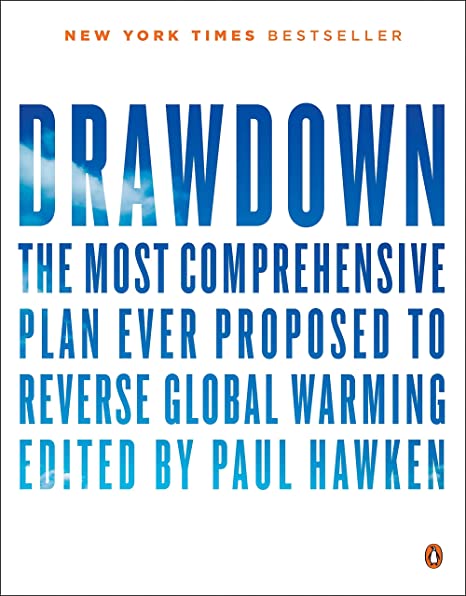

Hence the companies will have no other way but to reduce the prices. The result will be a decrease in margins which will eventually lead to falling stock meaning of systematic risk prices. You cannot overcome systematic risks by the act of diversification. Usually history repeats itself even though it is not in perfect form.
When problems plague one industry, they affect the individual businesses involved as well as the securities issued by those businesses. For example, after a national downturn in auto sales, the steel industry may suffer financially. As a systemic risk, climate change is something you can have a direct influence over as a business owner and employee.
And the advice is to diversify your portfolio so that if an asset fails they’ll be another to balance. To guard against the business risk, the investor has to analyse the strength and weakness of the industry to which the company belongs. If weakness of the industry is too much of government interference in the way of rules and regulations, it is better to avoid it. The investors can also buy treasury bills and bonds of short maturity. The portfolio manager can invest in the treasury bills and the money can be reinvested in the market to suit the prevailing interest rate.
Small economies can also be subject to aggregate risks generated by international conditions such as terms of trade shocks. Systemic risk differs from market risk, also known as systematic or undiversifiable risk. Systemic risk is a non-gaugeable risk that transmits from one institution or entity to another faster and severely impacts the financial mechanism, including the collapse of an economy. Wall Street is in lower Manhattan and is home to the New York Stock Exchange .
Systematic Risk Definition (Market Risk)
There is a wide range of insurance products that can be used to protect investors and operators from catastrophic events. Examples include key person insurance, general liability insurance, property insurance, etc. While there is an ongoing cost to maintaining insurance, it pays off by providing certainty against certain negative outcomes. The direct cash flow method is more challenging to perform but offers a more detailed and more insightful analysis.

Systemic threats like these are an inevitable part of the market-based system. Macroeconomic factors, such as inflation, interest rates, currency fluctuations. The dawn of risk management as a practice has been a key factor driving economic growth and increasing welfare since the industrial revolution.
Though systematic risk cannot be reduced by diversification, it does come a long way in understanding and identifying risks. The most common measure of systematic risk is the concept of beta (β), which reflects sensitivity of an individual security to market risk, i.e. the market volatility relative to the broader market (S&P 500). The effects of the dot-com bubble led to trillions of dollars in market cap being wiped out as tech companies with inflated valuations folded.
The two major components of risk systematic risk and unsystematic risk, which when combined results in total risk. The systematic risk is a result of external and uncontrollable variables, which are not industry or security specific and affects the entire market leading to the fluctuation in prices of all the securities. The risk of variations in future market values and the size of income, caused by fluctuations in the general level of interest rates is referred to as interest-rate risk. In other words, as the cost of money changes for risk-free securities, the cost of money to risk-prone issuers will also change. Consider an investor who purchases stock in many firms from most global industries. In finance and economics, systematic risk is vulnerability to events which affect aggregate outcomes such as broad market returns, total economy-wide resource holdings, or aggregate income.
TaxCloud (Direct Tax Software)
Beta measures the volatility of stock against the overall market, and the average beta of each individual investment in a portfolio represents the portfolio’s overall risk. On the other hand, unsystematic risk refers to the risk which emerges out of controlled and known variables, that are industry or security specific. Therefore, systematic risk is the risk faced by the entire market as a whole and can’t be cured through diversification or security selection.
Hence, businesses and authorities get time to take effective measures to deal with it. The federal government uses systemic risk as a justification—an often correct one—to intervene in the economy. The basis for this intervention is the belief that the government can reduce or minimize the ripple effect from a company-level event through targeted regulations and actions. Capital Asset Pricing ModelThe Capital Asset Pricing Model defines the expected return from a portfolio of various securities with varying degrees of risk. It also considers the volatility of a particular security in relation to the market.
- This is the well-known finance result that the contingent claim that delivers more resources in the state of low market returns has a higher price.
- Like, if workers of a manufacturing company go on a strike resulting in a drop in that company’s stock price.
- It can not be mitigated by diversification, only by hedging or by using the proper asset allocation strategy.
- Nvestors willing to make higher return on their investment are exposed to higher risk.
- The first on the list is the banking sector panic, which refers to the crisis in the banking sector due to depositors withdrawing more money than they need.
In the event of an interest rate rise, ensuring that a portfolio incorporates ample income-generating securities will mitigate the loss of value in some equities. Laws Affect Cost Margin BalanceChanges to government policies that affect all sectors are examples of systematic risks. For example, assume that government increases the minimum employee salary by 100%.
The financial risk should be minimised by analysing the capital structure of the company. If the debt equity ratio is higher, the investor should have a sense of caution. Along with the capital structure analysis, he should also take into account of the interest payment. In a boom period, the investor can select a highly levered company but not in a recession.
Non-conventional in nature, the Organisation for Economic Co-operation and Development produced a report on Emerging Systemic Risks to address these non-conventional risk elements. Moving away from conventional risks, there is a growing awareness that within our modern society new risk types are emerging. These risks are harder to define in terms of likelihood and impact. A risk management process is a set of steps enabling the identification, monitoring, and management of potential risks.
Systemic risk mitigation: Approaches to managing systemic risk
In such a case, natural disasters will have a defining impact on the indexes of that country. Almost all sectors in the region will face the ire of mother nature. A reform that reduces the taxes for general public or companies will have a positive impact. For example, assume that a government increases the minimum tax slab from 10 % to 30 % for businesses.
If he goes for the first option, then the return is low, but no risk is involved, including systematic risk. And, if he goes for the second option, then the additional return is the opportunity cost of the risk taken by going for the risky asset instead of the safer option. However, one can control systematic risks using only hedging and asset allocation methods. The opposite of systemic risk, unsystematic risk, has an effect on a very particular securities group or individual security. Beta is a measure of the volatility, or systematic risk, of a security or portfolio in comparison to the market as a whole.
Another way to avoid the risk is to have investment in short-term securities and to avoid long term investment. The rising consumer price index may wipe off the real rate of interest in the long term. Another suggested solution is to invest in bonds with different maturity dates. When the bonds mature in different dates, reinvestment can be done according to the changes in the investment climate. It is the chance that a nation’s currency will lose value when exchanged for foreign currencies. Change is the value of currency largely affects the share prices of IT companies.
Examples of conventional risks in business include employee illness, safety risks, changes in consumer preference, increased competition, government policy changes, ect. There is no doubt that risk management has made modern society safer. On the other hand, external business risk is the result of operating conditions imposed upon the firms by circumstances beyond its control. Each firm faces its own set of external risk, depending upon the specific operating environment factors that it must deal with. The Property Casualty Insurers Association of America classifies entities into two types to assess their chances of getting affected by these risks. One is too big to fail , and the other is too connected or interconnected to fail (TCTF/TICTF).
Definition of Unsystematic Risk
But, when most other companies struggle, there will be widespread layoffs. This type of chain reaction will lead to prices of every stock falling. Even if a company sustains margins by employing automation, there could be 3 issues.
Purchasing Power Risk
The concept of systemic risk was originally coined by financial market specialists. Therefore, systemic risks were defined as non-conventional risks to economic and financial systems. However, over the years the definition of systemic risk has become broader.
